Sense
Recommendation System based on Affective Interpretations of Social Media Posts: A proposed User Interface Design
Zheng Zhang | Visual Communication Design 2018
Committee | Adam Smith, Miguel A. Cardona Jr, Tim Wood
More Works | zealaez.com
What's the project?
This thesis project builds a multi-platform experience which provides different recommendations according to their emotion and actions for people. This system shows as an App on iPhone X in the final design solution.
What's the situation?
Most searches and recommendation systems fail to take into consideration the emotional context related to a user’s input and action. They can hardly provider results linked to a person as an original spirit.
How do I solve this?
I designed a system that analyzes emotion and actions based on people’s social network posts and provides related recommendations for people to offer motivations and inspirations in people’s lives. It intends to encourage people to explore their lives, improve their health and promote the life quality.
Problems
Most searches and recommendation systems fail to consider people's emotion and actions.
Most searches and recommendation systems include intelligent personal assistant. People usually need specific recommendations which they may be not aware of.
People are easier to get nervous or even more serious problems.
Researchers show long-time Internet use or excessive social information can lead to a certain scale of nervousness.
People are getting harder and harder to form a good lifestyles.
Nowadays, people are receiving much more pressures from society. It's harder for people to think more about how to explore lives, find the inspirations and build a good lifestyle.

Proposed Solution
Search Engine
The system could offer various type of search results responded to user's emotions and actions after analysis.
Affective Aspects
The system can fundamentally understand what users think, how users feel and how to modify users' emotions using design philosophy and methodology.
Goal Tracking
The system includes goal tracking function that allows users to add their goals and provides more healthy and active recommendations for users.
How does it work?
The following product demo indicate how the system works. This thesis project relies on emerging technology like Text or Sentiment Analysis, Voice or Face Recognition and Artificial intelligence.
Emotion
Sense learns your activities and emotion from your social network updates, expresses its emotions based on the information as a colorful flow.
Respond
You can respond Sense using gestures, voice or even your expression (use typical devices). You may need to define your own gesture pattern to let Sense understand you.
Conversation and Recommendation
Sense talks to you and gives you recommendations related to what you like, what you may need or what you may want to do.
How does "Sense" behave?
Express its emotion
“Sense” could use color, shape, pattern to express its feeling by displaying as flows.
Interact with you
Users can interact with "Sense" using their gestures, voice and even face. "Sense" could understand what you mean and what you are feeling.
Be with you and keep learning about you
"Sense" will check your status by learning your bio information and your updates on your social network. So it can learn more about you.
Express its emotion
Sense's emotions are shown as flows consist of color, shape, and pattern. Emotional color is based on Plutchik's wheel of emotions and related theories. Color, shape and pattern changes demonstrate affective changes.
Happy
Relaxed
Surprise
Interact with you
Users can interact with "Sense" using their gestures, voice and even face. Users could create or define their own gestures representing different meaning, such as like, dislike. Also, on this No UI interface, gestures could stand for different interactions like go back, switch. Based on voice and face recognition technology, users can actually talk to Sense or just let Sense read your emotion.
Dislike
Like
Go Back

Voice
Sense will check whether you are talking to it. It will check your conversation content and emotion from your sound.
Emotion responds
It will express its emotion via the colorful, moving flow. Sense intends to let you feel delighted and comfortable using the transformation of the flow.
Communication
Sense will "talk" to you like your close friend. Based on what it learned from you, it will know what you may need next.
Be with you and keep learning about you
"Sense" will check your status by learning your bio information and your updates on your social network. It can find the moments that you are feeling not right and give you recommendations to get the bad mood away.
Bio Information
By connecting with your wearable devices or bio information platform, Sense knows the moments that you may not feel well. Then, Sense can provide useful recommendations to let you feel better.
Goal Tracking
You can set goals in Goal Tracking function. If you did, Sense will offer more goal related recommendations for you.
LBS
LBS service can help Sense to know where you are. It helps Sense to give you more localized recommendations.
Design Processes
Situation analysis, problem and target audience defination
Discover the situation, and summarize the situations. According to the information gathered, target audience could be defined.
Design ideation
Use sketches to demonstrate the problems and situation and get inspiration and the design ideas.
Comparative analysis
Check the different type of recommendation or search provider services and experience out the market.
Subdivide the problems
Create Function model, State-Transition diagram, Information Architecture, Use Cases and Color Study to understand how to solve the problems better.
Exploration
Try different design decisions and do different prototypes. Then come up with advantages and disadvantages of different design decisions.
Final design solution
Make final design decisions, do the final design and final prototype.
Situation analysis, problem and target audience defination
Discover the situation, and summarize the situations. According to the information gathered, target audience could be defined.
Situation analysis
Most searches and recommendation systems fail to take into consideration the emotional context related to a user’s input and action. They can hardly provider results linked to a person as an original spirit.
Problems defination
Most searches and recommendation systems fail to consider people's emotion and actions. People usually need specific recommendations which they may be not aware of.
People are easier to get nervous or even more serious problems. Researchers show long-time Internet use or excessive social information can lead to a certain scale of nervousness.
Nowadays, people are receiving much more pressures from society. It's harder for people to think more about how to explore lives, find the inspirations and build a good lifestyle.
Target audience defination
General
People who want to receive recommendations based on their preferences / People who feel stressed about social and social media.
Sex
No preference
Age
17 - 55 (Primary age group)
Education
Above high school
Design ideation
Use sketches to demonstrate the problems and situation and get inspiration and the design ideas.
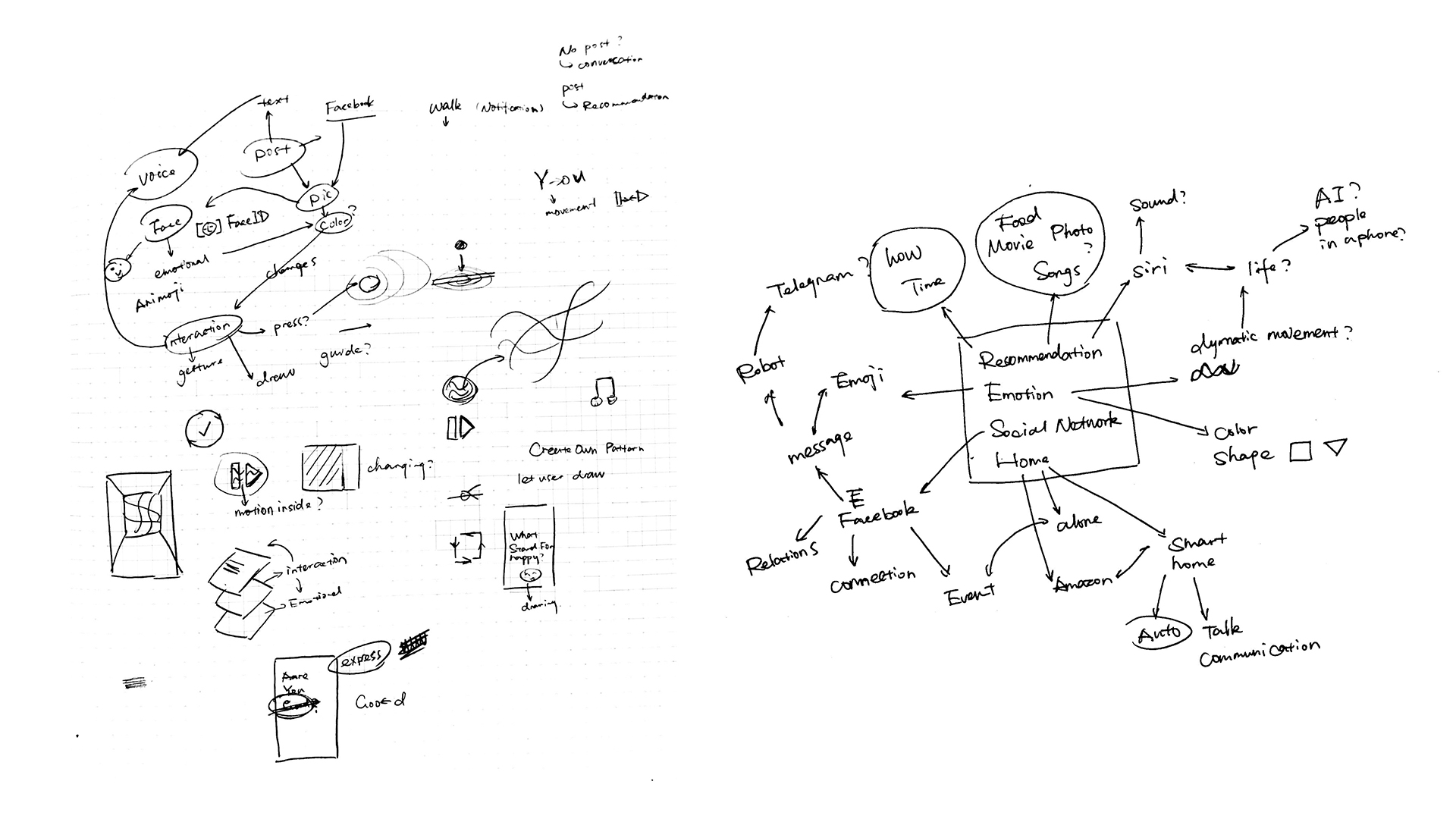
Comparative analysis
Check the different type of recommendation or search provider services and experience out the market.
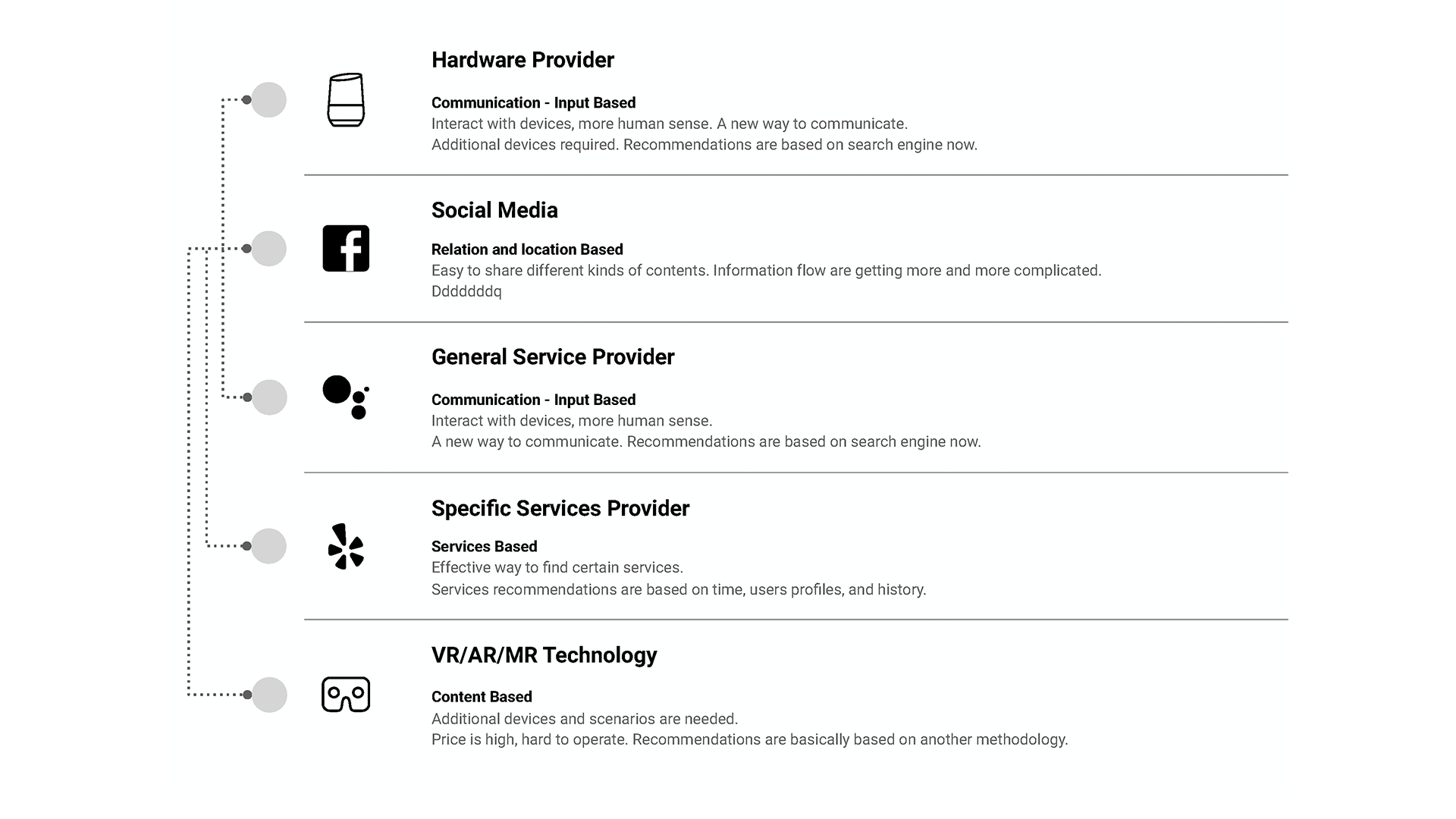
Subdivide the problems
Create Function model, State-Transition diagram, Information Architecture, Use Cases and Color Study to understand how to solve the problems better.
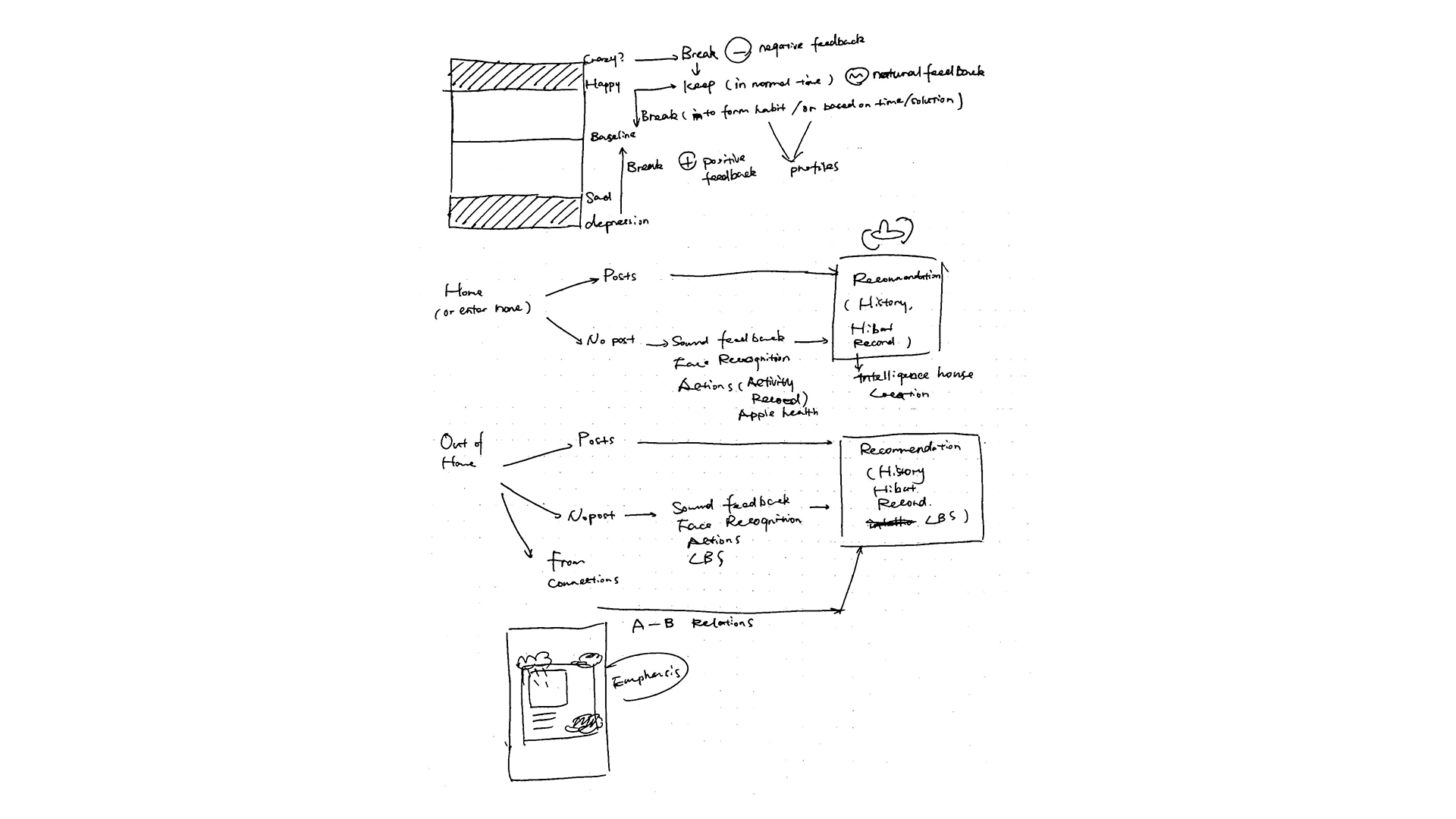
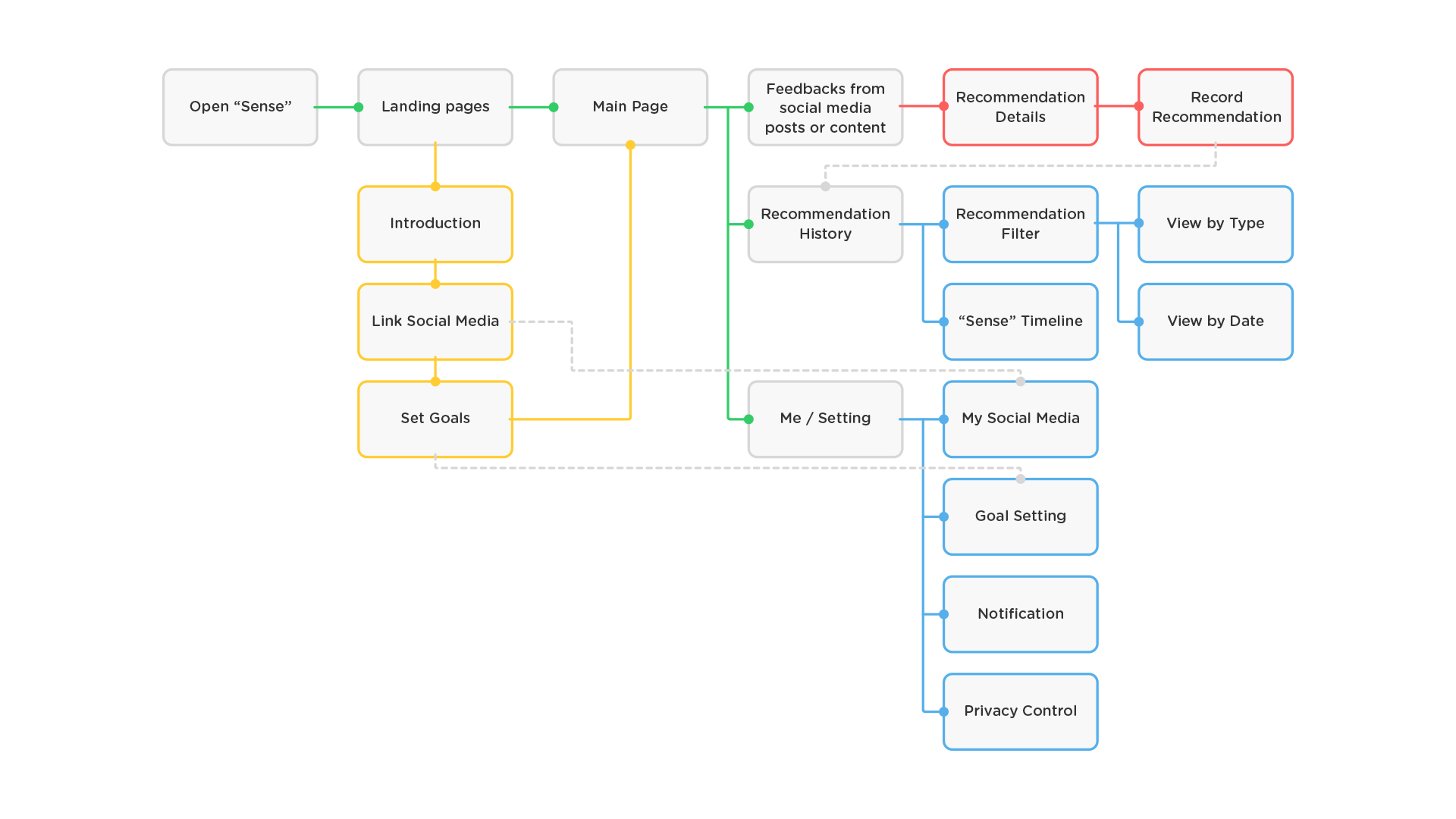
Exploration
Try different design decisions and do different prototypes. Then come up with advantages and disadvantages of different design decisions.

Exploration 01
All recommendations are displayed as flow combining different colors related to emotions.
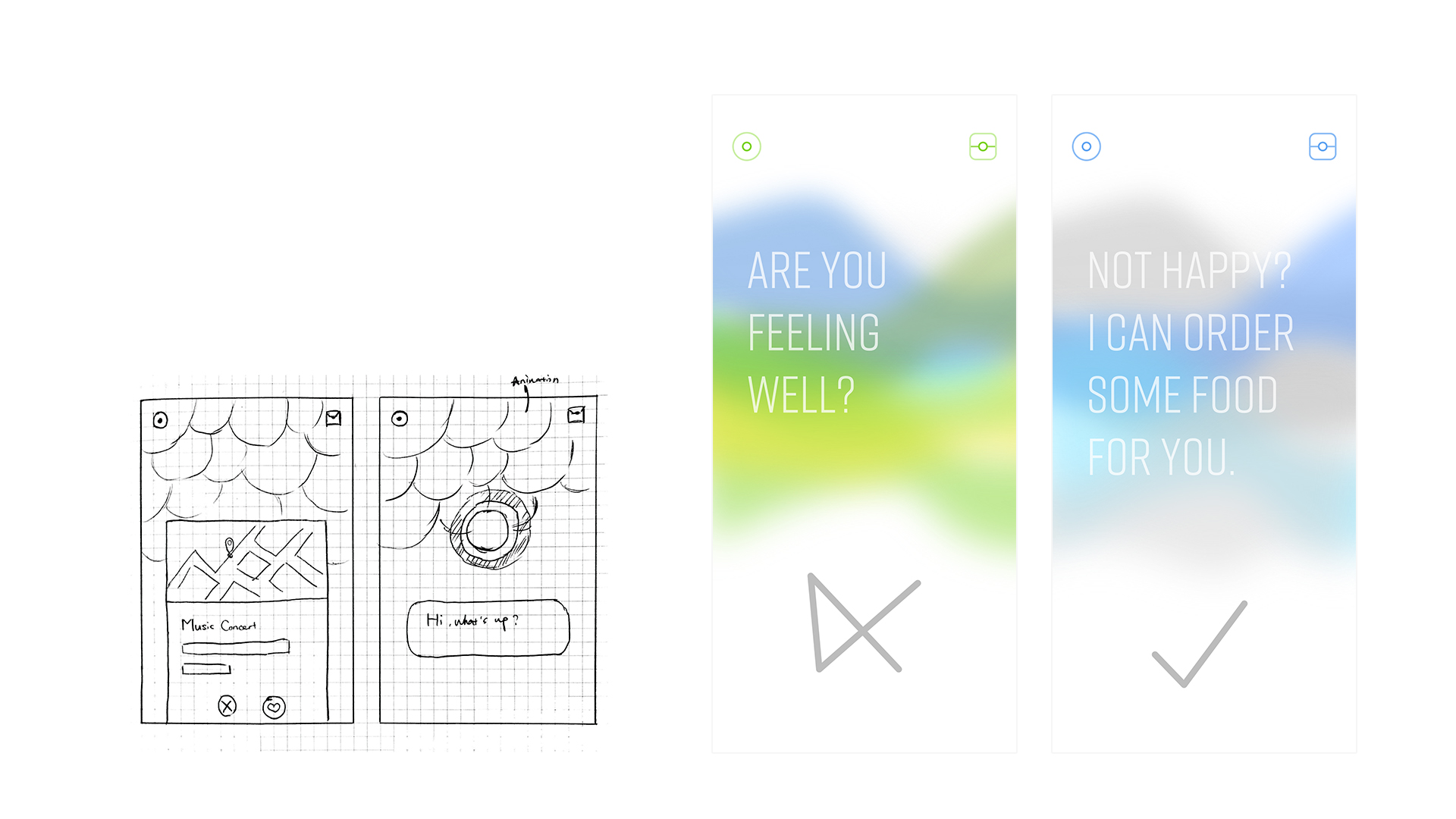
Exploration 02
People can just draw and create the interaction on the screen, there’s no exact interaction limit. Different responds can change the background flow.
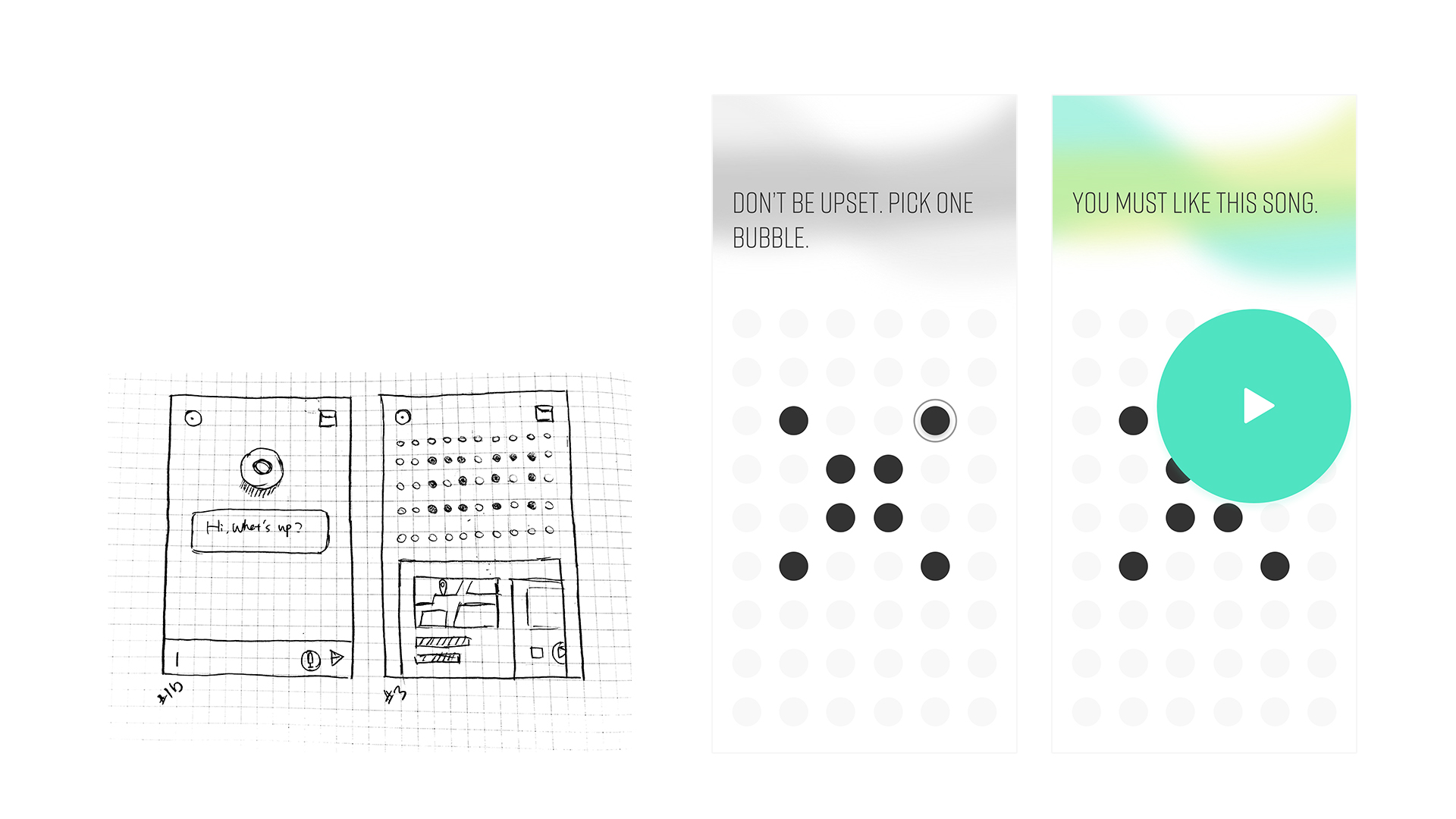
Exploration 03
Emotional result shows via dots. Each dots can be individual recommendation based on the user’s profile.
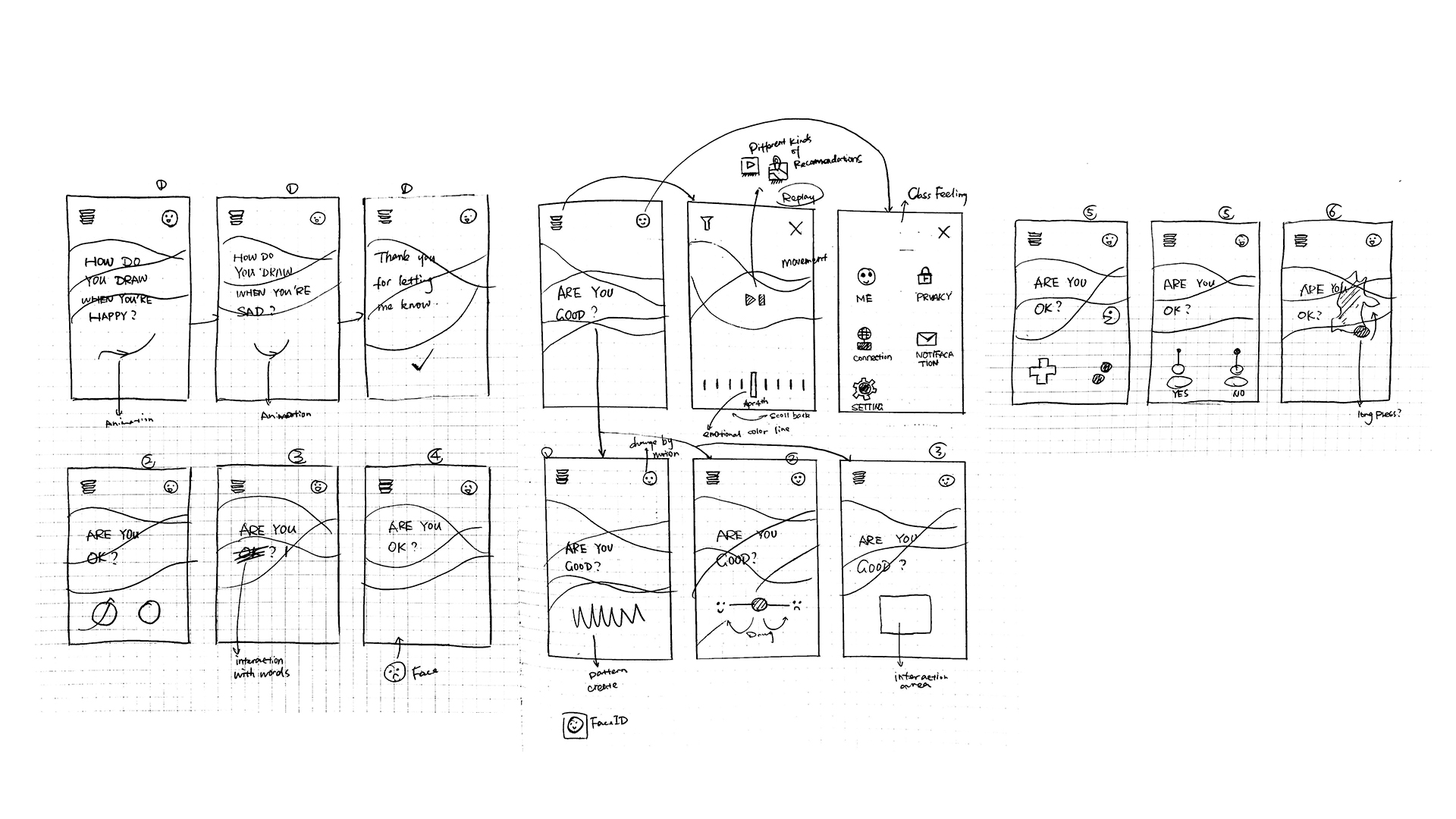
Thank you.
Zheng Zhang | Visual Communication Design 2018
Committee | Adam Smith, Miguel A. Cardona Jr, Tim Wood
More Works | zealaez.com
